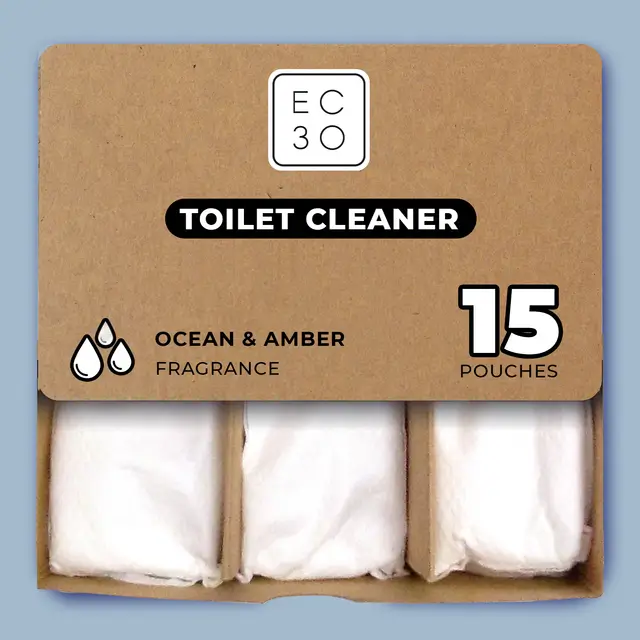
Is EC30 Toilet Cleaner safe for your septic?
Let’s begin by examining its ingredients:
Ingredients:
- Sodium Bicarbonate (Baking Soda)
- Succinic Acid
- Polyvinyl Alcohol
- Hydrated Silica
- Fragrances (Ocean and Amber)
- Disodium Cocoyl Glutamate
- Polyalkylene Glycol
- Sorbitol
- Cetyl/Lauryl/Myristyl Hydroxysultaine
Ingredient Analysis
✅Septic-Safe or Generally Acceptable Ingredients:
- Sodium Bicarbonate – Gentle, natural cleaner and deodorizer; septic-safe.
- Succinic Acid – Biodegradable organic acid; generally safe in cleaning concentrations.
- Disodium Cocoyl Glutamate – Mild surfactant derived from coconut and glutamic acid; biodegradable and septic-friendly.
- Cetyl/Lauryl/Myristyl Hydroxysultaine – Biodegradable foaming agent; used in eco-friendly products.
- Sorbitol – Sugar alcohol used as a binder/humectant; non-toxic and biodegradable.
- Hydrated Silica – Inert mineral compound; safe in small amounts.
⚠️Ingredients of Minor or Potential Concern:
- Polyvinyl Alcohol (PVA) – Biodegradable under specific conditions, though slower to break down in low-oxygen septic tanks. Acceptable with occasional use.
- Polyalkylene Glycol – Synthetic polymer; low toxicity, but limited biodegradability in anaerobic environments. Use with moderation.
- Fragrances – Vague term; may include synthetic compounds not fully biodegradable or known allergens. Without disclosure, caution is advised.
Verdict: Safe or Unsafe for Septic Systems?
Safety: ✅ Generally Septic-Safe With Occasional Use
Most ingredients in EC30 Toilet Cleaner are biodegradable and septic-friendly, especially the primary cleaning agents. The presence of polyvinyl alcohol and polyalkylene glycol may warrant moderate use rather than daily application, especially in sensitive systems. Opt for fragrance-free versions if concerned about synthetic additives.